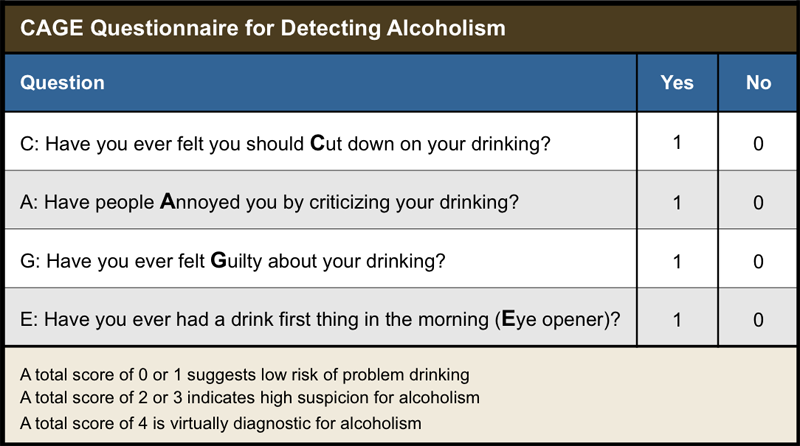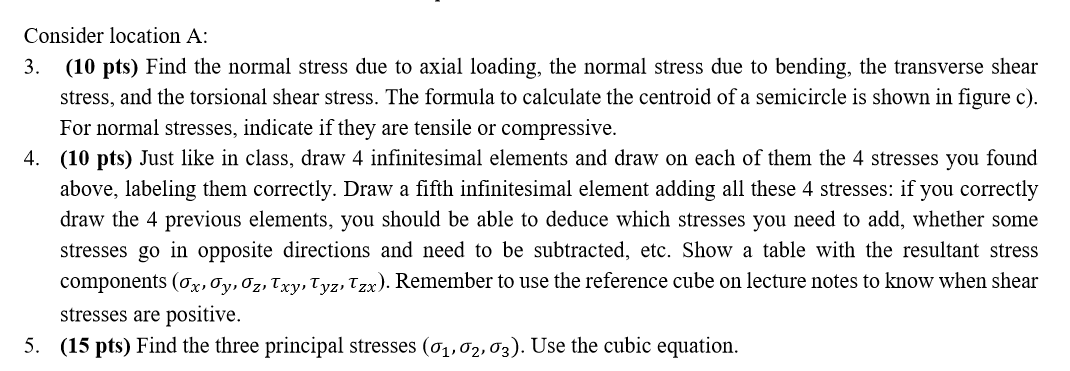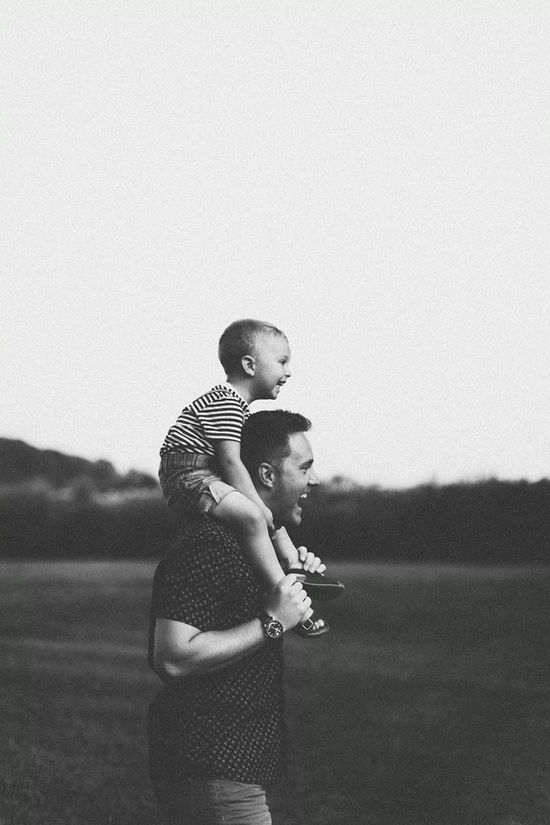What is the fear of vomiting
Fear of Vomiting, or Emetophobia
Boost Search Results
On
If you have a fear of vomiting, just reading the title of this article might make you a bit queasy. The mere mention of the "V word" might send you into a state of anxiety. If you can relate, I encourage you to press on despite your worry, so you can take the first steps to overcoming it.
If you suffer with this type of phobia (specifically known as emetophobia), you are not only repulsed by the idea of vomiting, you fear it. And you probably have at least one of these fears, too:
- Not being able to find a bathroom in time
- Vomiting over and over and being unable to stop
- Choking on vomit and suffering physically
- Embarrassing yourself in front of others
- Being admitted to a hospital
Many people say that the anticipation of vomiting is often worse than the act itself.
How Did I Get This Way?Vomit phobia can develop spontaneously or following a traumatic vomiting experience. Once it starts, your fear can escalate. Step by step, you avoid places and things you associate with vomiting, you become increasingly more hypervigilant, and the fear soon dominates your life. The more you avoid, the greater your fear becomes. Dietary habits usually grow strict, and anything unfamiliar or with the slightest possibility of causing sickness results in compulsive checking and avoidance.
People who suffer with this phobia often experience significant social and occupational impairment, going to great lengths to make sure they don’t vomit (similar to someone who fears elevators and walks up 10 flights of stairs). Kids refuse to go to school or visit a friend’s house, and adults miss work and stop eating at restaurants. Much of life is avoided all due to a fear of vomiting. This means missing out on much of life and a great deal of worrying and strategic planning — all to avoid something uncomfortable that seldom happens. The uncertainty of not knowing when it will happen is what causes so much distress.
And because you don’t know when it will happen, you are constantly on guard, rearranging your life to ward off any possibility of puking.
If this sounds like you, these protective behaviors may be familiar, too:
- You avoid new foods, restaurants, or alcohol.
- You avoid foods, beverages, or restaurants associated with past vomiting.
- You avoid saying or hearing the words “vomit,” “barf,” “puke,” or “tossing your cookies.”
- You close your eyes during vomiting scenes on television or in movies.
- You check other people for signs of illness and avoid hospitals and sick people.
- You refuse to shake hands with people.
- You avoid garbage and other foul-smelling or dirty things.
- You engage in excessive handwashing, as well as cleaning food and preparation surfaces.
- You throw away food before it has reached its expiration date.
- You smell and check food excessively.
- You overcook food to kill potential pathogens.
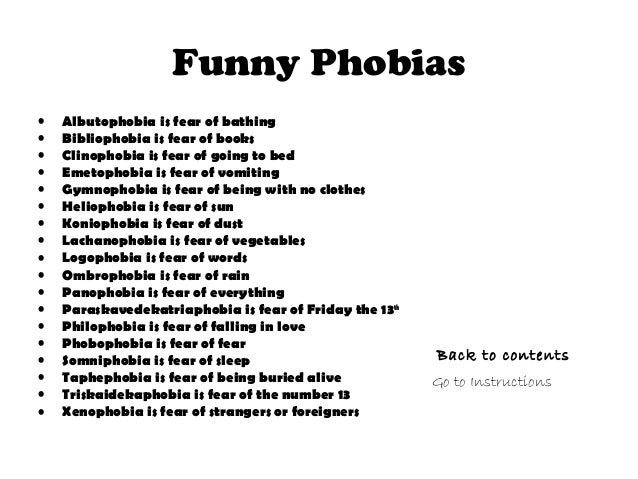
- You use antacids preemptively.
- You avoid eating foods when you’re away from home.
- You check the locations of bathrooms.
- You restrict or avoid travel, school, work, and social activities.
- You take your temperature excessively or monitor your body for other signs of illness.
Stomach discomfort and nausea can be caused by motion sickness, a stomach bug, food poisoning, excessive eating or drinking, food intolerance and…anxiety! That’s right: Anxiety and worry can cause stomach discomfort and nausea.
If you worry about the possibility of barfing and are hypervigilant to prevent it, you can cause the very symptoms you desperately do not want. Worrying about getting sick doesn’t prevent vomiting, it only makes you nauseated. And when you start to feel nauseated, that’s when the worry and anxiety really kick into gear, which of course intensifies your nausea.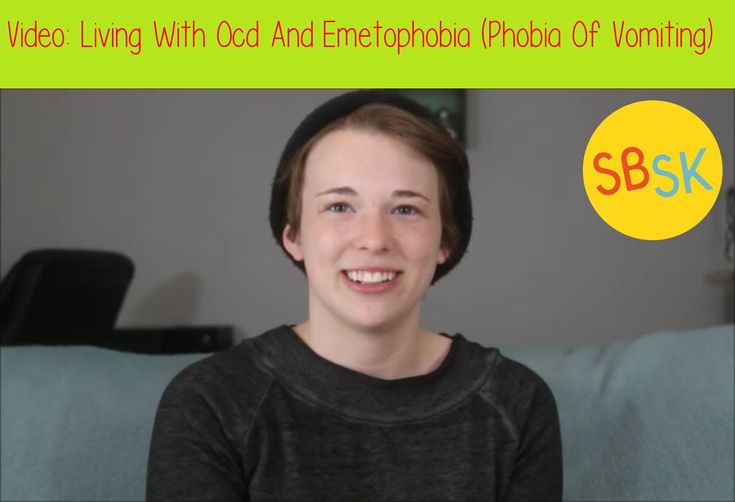 It’s a vicious cycle. Worries about vomiting can trigger nausea, and nausea and stomach discomfort can trigger worries about vomiting.
It’s a vicious cycle. Worries about vomiting can trigger nausea, and nausea and stomach discomfort can trigger worries about vomiting.
Anxiety has a way of fooling you into believing that you are going to vomit when you feel nauseated. You believe it even when it has never happened. Here’s the good news:
If you do not vomit when you’re anxious…you won’t! Anxiety may cause nausea, but not vomiting.
It’s important to remember that the only reason you might vomit would be due to food, alcohol, motion sickness, or a stomach bug —and you won’t be able to stop it. In fact, vomiting is the body’s natural reaction to harmful substances or irritation in the gut. People often feel better after they barf. In most cases it’s harmless and over within 24 hours. Rather than worrying and wondering if you’re going to puke, make peace with uncertainty.
You don’t know when it will happen and you don’t need to. Since you can’t stop it, you shouldn’t try.
Worrying about getting sick doesn’t prevent vomiting, but it does make you nauseated, which results in more anxiety, intensifying your nausea and causing greater anxiety until you flee the scene. Rather than worrying if you’re going to puke, make peace with uncertainty, live your life to the fullest, and accept the discomfort of the rare barfing experience. How do you do this?
Here’s Where Treatment Comes InTreating vomit phobia is best accomplished through cognitive-behavioral therapy (CBT) and exposure and response prevention (ERP). Treatment involves correcting faulty beliefs, reducing avoidance, and confronting challenging situations step-by-step. You are given tools, a new perspective, a winning mindset, and a strategy for facing your fears. Your motivation for ending your suffering is important because the therapy does take time, hard work, and courage. You must have self-discipline and determination to win. And if you do…you can beat emetophobia!
Ken Goodman, LCSW, treats anxiety and OCD in Los Angeles. He is the author of The Anxiety Solution Series: Your Guide to Overcoming Panic, Worry, Compulsions and Fear, A Step-by-Step Self-help Audio Program, Break Free from Anxiety, a coloring, self-help book for anxiety sufferers, and the Emetophobia Manual, for those who suffer with the fear of vomit. Ken Goodman is an ADAA board member and Clinical Fellow. Visit Ken's website.
He is the author of The Anxiety Solution Series: Your Guide to Overcoming Panic, Worry, Compulsions and Fear, A Step-by-Step Self-help Audio Program, Break Free from Anxiety, a coloring, self-help book for anxiety sufferers, and the Emetophobia Manual, for those who suffer with the fear of vomit. Ken Goodman is an ADAA board member and Clinical Fellow. Visit Ken's website.
Fear of Vomiting - Child Mind Institute
Kylie had always been an anxious child. She didn’t like to be separated from her mother, Sidney. As a three-year-old, she developed a sort of vocal tic, a persistent cough, after a bout with walking pneumonia. Soon there were other compulsive behaviors, like asking repetitive questions.
In pre-K, Kylie threw up after eating canned peaches, and from then on became increasingly fearful of vomiting or being around vomit. “It was very insidious,” says Sidney, who has a master’s degree in special education. “I think her mind was working and taking these little baby steps down this path of fear almost. ”
”
One night, Kylie told her mother she wasn’t going to wear her pajama top to bed. Soon, she was refusing to wear any pajamas, and she slept on top of the covers. Then she dragged a comforter into her closet and slept on that. Next came the pillow, which she used to prop herself up into a sitting position while she slept. She was five years old.
Kylie’s parents tried reassuring her. They tried using rewards. If they attempted to march her over to the bed, Kylie panicked. “Kicking, screaming, punching,” says Sidney. “It was like, imagine if you’re going to be murdered imminently and you knew that.”
Kylie’s problem is called emetophobia, or the severe fear of vomiting or seeing others vomit, and it’s surprisingly common among both children and adults.
How the fear develops
Of the 1,500 or so children he has treated in his career, Jerry Bubrick, PhD, a clinical psychologist at the Child Mind Institute who specializes in anxiety, estimates that 10 to 20% have presented with emetophobic symptoms. Like Kylie, many of his patients already have an “anxious temperament” before they start showing signs of the disorder, which might be triggered by seeing other kids at school or on the bus vomit, or vomiting themselves.
Like Kylie, many of his patients already have an “anxious temperament” before they start showing signs of the disorder, which might be triggered by seeing other kids at school or on the bus vomit, or vomiting themselves.
“They start to associate cues in the environment that they remember with vomiting,” he says, “and then start to become fearful with those cues.” Bit by bit, they begin avoiding places and things they associate with throwing up, even refusing to say or write the word “vomit.” They become strict in their dietary habits, eschewing anything they’re not familiar with or fear could make them sick, compulsively checking expiration dates on food items. In some cases, malnutrition becomes an issue.
The fear escalates
One of Dr. Bubrick’s recent patients, for instance, a young girl already living with anxiety, contracted food poisoning on Thanksgiving. Over the following days and weeks, she grew increasingly fearful of anything associated with Thanksgiving food—avoiding not only the leftovers, but any food linked to the holiday. Soon she was refusing to wear the clothes she’d had on the day she got sick and wouldn’t even walk into the rooms she’d been in immediately prior to and after vomiting.
Soon she was refusing to wear the clothes she’d had on the day she got sick and wouldn’t even walk into the rooms she’d been in immediately prior to and after vomiting.
Some children, says Dr. Bubrick, can’t articulate their fear, leaving parents to guess at, and, unfortunately, underestimate the phobia’s grip on their child. “Normally, like all phobias,” says Dr. Bubrick, “it starts out kind of small, and it builds, and builds and builds. But when it’s kind of small, parents are like, ‘Well, it’s not that big of a deal. They’ll grow out of it. They’ll come around.’ But then, over time, it just gets to the point where parents are like, ‘This is crazy. We can’t live like this anymore.’”
Before the breaking point, however, parents do what comes instinctively—they comfort and reassure their children. Doing so only prolongs the problem. Dr. Bubrick likens it to scratching a bug bite. “When you get bitten by a mosquito,” he says, “it itches, and it’ll make you feel better the moment you’ll scratch.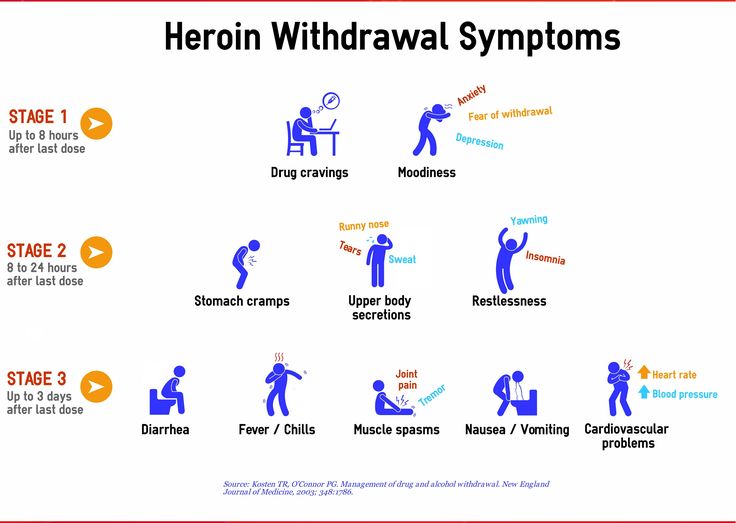 But as soon as you stop scratching, the itching gets worse. The very thing you’re doing in the moment to make it better, in the long term makes it worse.” When children avoid things that trigger their fears, or seek reassurance to calm their anxiety, it only strengthens the phobia.
But as soon as you stop scratching, the itching gets worse. The very thing you’re doing in the moment to make it better, in the long term makes it worse.” When children avoid things that trigger their fears, or seek reassurance to calm their anxiety, it only strengthens the phobia.
Fears are often dismissed
For seven or eight months, every night in Sidney’s home ended the same way. Kylie was exhausted. Sidney and her husband were exhausted. If someone had vomited at school, Kylie would manage to hold it together until she got home, and then, says Sidney, she’d hit the house “like a tornado,” throwing away clothes that could have potentially touched the vomit. Doctors said the little girl was just being defiant. “It was a whole gamut,” says Sidney. “She was being controlling. It’s a sibling rivalry because my son had just been born. She’s attention-seeking. She’s being manipulative.”
This response is not uncommon, according to Dr. Bubrick. Parents and pediatricians unfamiliar with the phobia tend to think of it as a phase that will go away, and take a wait-and-see approach.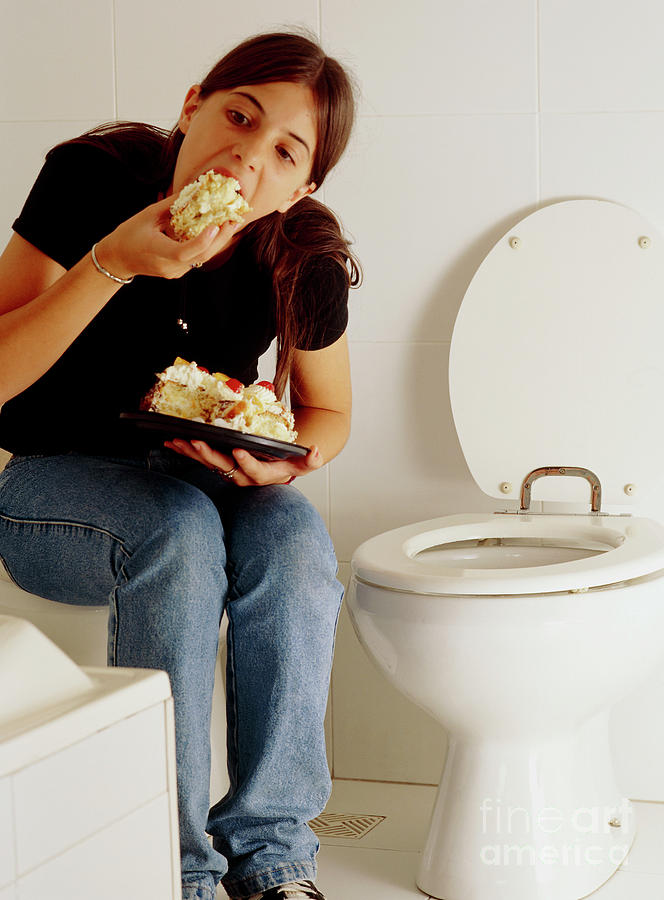 But there’s another reason children go untreated, carrying their fears into adulthood: shame. Anna S. Christie is a counselor based in British Columbia, who began suffering from emetophobia as a young child. Her fears were dismissed by the adults around her, so while she still experienced severe symptoms, including terror at the thought of going to school or on field trips, she learned to keep the root cause to herself, developing “incredible shame.”
But there’s another reason children go untreated, carrying their fears into adulthood: shame. Anna S. Christie is a counselor based in British Columbia, who began suffering from emetophobia as a young child. Her fears were dismissed by the adults around her, so while she still experienced severe symptoms, including terror at the thought of going to school or on field trips, she learned to keep the root cause to herself, developing “incredible shame.”
“Even with my own mom, I would just be told it’s ridiculous, so very quickly I stopped telling anybody about it,” says Christie, who now mentors emetophobic children and adults online. “My mom kind of knew, I guess she always knew, but I would not even say it to her. ” It wasn’t until Christie was in her mid-forties that she was able to find enough information about her phobia online to take to a therapist and begin working through it.
The connection with OCD
About a year after Kylie’s bedtime ritual started, Kylie’s anxiety escalated. “I was rocking the baby in the rocking chair,” says Sidney, “and she came up and she put her arm around my neck, and she looked at me, and she said, ‘Mommy, I want to hug you but I’m not going to. I think I might strangle you.’ ”
“I was rocking the baby in the rocking chair,” says Sidney, “and she came up and she put her arm around my neck, and she looked at me, and she said, ‘Mommy, I want to hug you but I’m not going to. I think I might strangle you.’ ”
Kylie wouldn’t set the table for fear she’d take a knife and cut her own finger off. She wouldn’t play with her siblings for fear she’d smother them. She was diagnosed with severe obsessive-compulsive disorder.
While emetophobia is technically a specific phobia, Dr. Bubrick says it’s more closely associated with OCD than with a phobia like a fear of spiders, which is more discreet. In fact he estimates about 30 to 50 percent of the kids he’s treated with a fear of vomiting also exhibit OCD symptoms.
“There’s a lot of different presentations of OCD,” explains Dr. Bubrick. “Some kids are afraid of harming other kids or their family members, or they’re afraid of germs and bad luck, and all kinds of things. Over the years, I’ve seen a lot of kids who are afraid of vomiting. ”
”
Treatment with exposure therapy
Kylie’s doctors began addressing her OCD and emetophobia with a kind of behavior therapy called exposure and response prevention. The clinician works with the child to create a hierarchy, rating the things that trigger their anxiety on a scale of one to ten. Then, starting with the lowest rung, the child is exposed to the things they’ve been avoiding, often in tiny, incremental steps. For an emetophobe, that could mean starting by writing the word vomit, then progressing to talking about it, drawing it, seeing cartoons or photos of it, possibly even being around a facsimile of it. They experience anxiety, but they also learn that the anxiety fades.
“When we expose patients systematically to things that they’re afraid of, without allowing them to push it away, their anxiety will go up and up and up, peak, and it’ll come down by itself,” says Dr. Bubrick. After the 10th or 50th repetition of an action—say, eating a potato chip that’s past its expiration date—patients experience a “cognitive shift,” in which they realize the thing they feared wasn’t as bad as they thought it would be.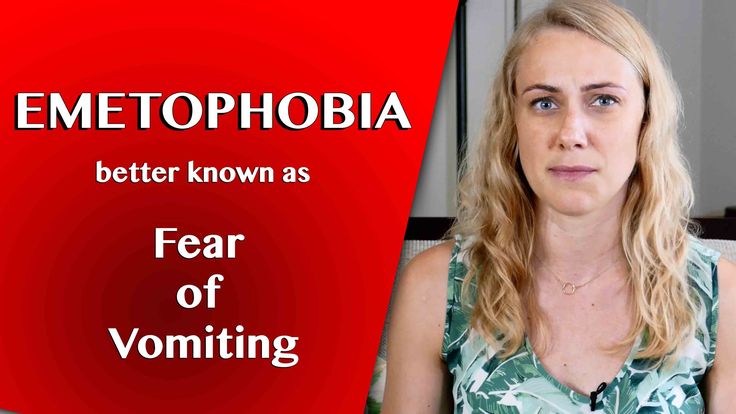 “If they’re constantly pushing the anxiety away,” says Dr. Bubrick, “they’ll never have that experience.”
“If they’re constantly pushing the anxiety away,” says Dr. Bubrick, “they’ll never have that experience.”
Kylie continued therapy for a couple years, and remains on medication. Today, she still struggles with her fear of vomiting, but she’s not only sleeping in her own bed, but is now venturing out into the world with confidence. Last year she attended an overnight camp for two weeks, and she’s since upped the ante. “It’s just like a miracle,” says Sidney, “she will be at camp for four weeks, by herself, and is able to sleep in a bunk like everyone else. It’s something I never, ever, ever thought would happen.”
Emetophobia: fear of vomiting - causes, symptoms and treatment Although temporary suffering is quite normal, many people are actually afraid of vomiting. This type of intense fear is known as emetophobia. A person suffering from emetophobia is not actually sick, but simply afraid of vomiting.
Derived from the Greek word "emein" which means "the act of vomiting.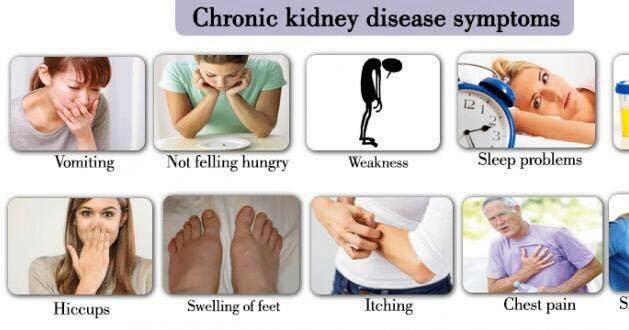 " This phobia is not very popular among professionals and is often misdiagnosed as other mental disorders. However, the fear of vomiting exists and can completely destroy life. Phobia denotes an irrational and excessive fear of vomiting or seeing other people. A person can go to the formation of ritual cleanliness and eating habits in order to completely avoid the problem. Phobia is often misunderstood for the other conditions described below.
" This phobia is not very popular among professionals and is often misdiagnosed as other mental disorders. However, the fear of vomiting exists and can completely destroy life. Phobia denotes an irrational and excessive fear of vomiting or seeing other people. A person can go to the formation of ritual cleanliness and eating habits in order to completely avoid the problem. Phobia is often misunderstood for the other conditions described below.
Anorexia Nervosa
This is an eating disorder in which a person avoids whole foods in order to stay thin. However, emetics cause anorexia . Because a person deliberately removes food through vomiting. Thus, he does not actually suffer from eating disorder .
Fear of society
Social phobia is a special fear of social conditions. For example, a person avoids large crowds of people. He has an obsessive idea that he will see vomit and have bouts of nausea .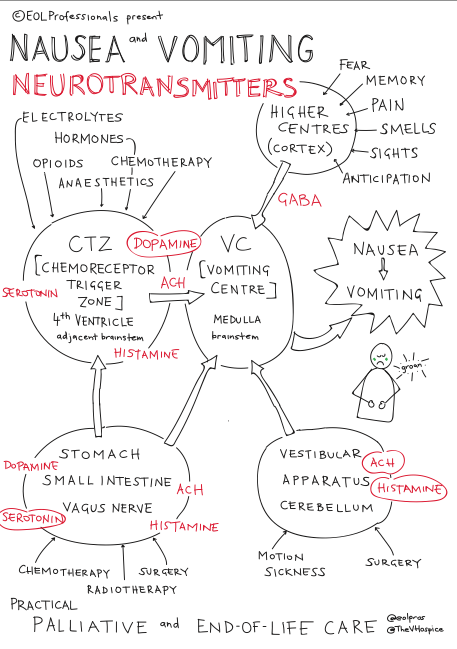
Obsessive Compulsive Disorder (OCD)
People suffering from emetophobia tend to cleanliness, washing and ritual eating habits. However, it is entirely caused by fear of vomiting, not OCD.
Disaster event
Emetophobia can be very much the result of an accident in which a person has experienced terrible vomiting or has seen someone else suffer from it. This is very common in people who have had health problems that caused constant vomiting. This type of health disorder can make a person realize that they are very ill.
Other phobias and mental disorders
Many other phobias and disorders such as panic attack, social phobia , agoraphobia and other anxiety conditions can cause a person to feel sick .
Symptoms of emetophobia
The main symptoms that can occur in anyone (both children and adults) suffering from emetophobia are:
- persistent and irrational fear of being abandoned;
- avoids all parties and holidays so as not to eat or get sick;
- avoids amusement parks, long distance travel, hotels and restaurants where she may see people vomit;
- never leaves the house during flu season or any other circumstance where he might vomit;
- extremely attentive to health and hygiene;
- constantly checks food before eating;
- panic attacks accompanied by physical symptoms such as trembling, dizziness or fainting, rapid heartbeat, sweating , muscle tension, trouble breathing and body numbness.
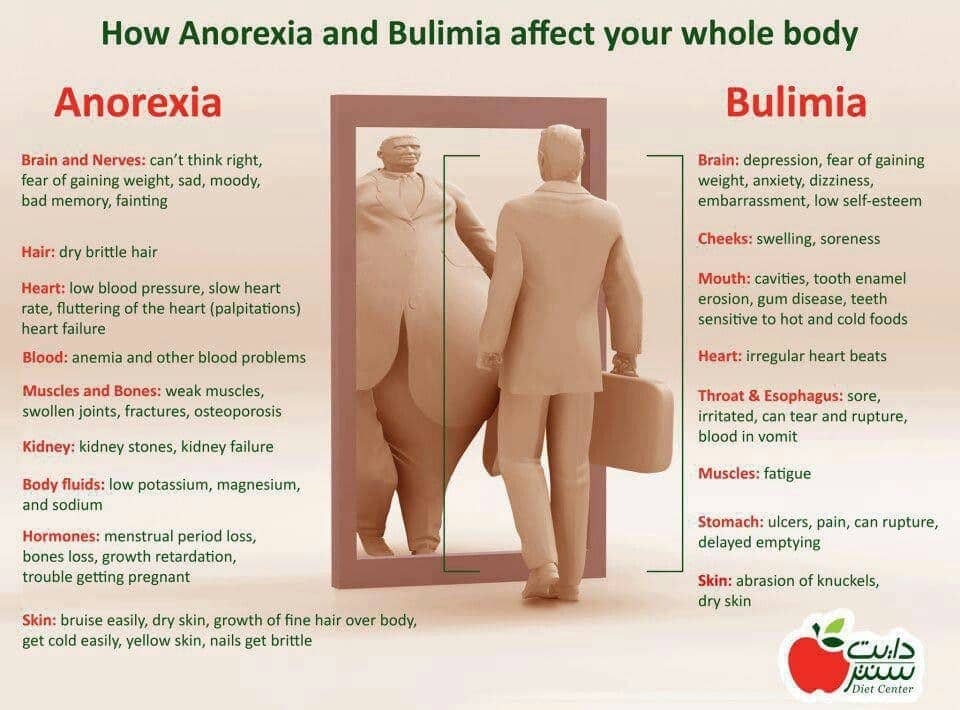
Treatment
Emetophobia can be treated using a healthy combination of psychotherapy and medication. The most commonly used treatment procedure includes:
- cognitive behavioral therapy (CBT) - therapist can use conversation and even hypnosis to understand negative images associated with phobia in man. Through CBT sessions the therapist also teaches and helps the patient recognize the phobia . Eventually, the person begins to feel lighter;
- medicines - Commonly used medicines to treat emetophobia are antidepressants . They help regulate brain chemicals such as serotonin, which helps maintain a person's good mood and temperament.
Published in Psychotherapy Premium Clinic
what is it and what is another name for fear, how to recognize the fear of nausea and vomiting, how to stop being afraid and what to do if you do not get rid of vomitophobia yourself?
Nausea and vomiting are symptoms of most diseases. But often the involuntary release of the contents of the stomach is a sign of psychological fear in a person, causing a lot of trouble.
But often the involuntary release of the contents of the stomach is a sign of psychological fear in a person, causing a lot of trouble.
What is emetophobia, and why can a physiological phenomenon cause panic in people predisposed to it?
Contents
- What is vomitophobia and what is it called?
- Causes
- Predisposition
- Symptoms
- Features in children and adolescents
- Manifestations in adults
- Diagnosis
- How to stop being afraid on your own?
- When can't get rid of fear on your own?
- What to do: methods of therapy
- Prevention
- Consequences and prognosis
- Useful video
- Conclusion
What is vomitophobia and what is it called?
Emetophobia is a strong fear of vomit. The second name of the phobia is vomitophobia. This is the fear of vomiting in a public place. A person also experiences a fear of nausea and panics even at the thought that he will become ill and no one will come to the rescue.
Emetophobe is afraid that he will not run to the toilet, will not stop vomiting and will suffer from this.
Psychoanalysts call emetophobia an obsessive neurosis. Anxiety for people suffering from this phobia is the main "companion" of their behavior.
This fear is similar to anxious hysteria. Hallucinations, delusions, nightmares are frequent companions of phobias.
Treatment of emetophobia is given not the last place in psychology and psychiatry.
Patients who experience this fear are subject to stress and constantly experience tension.
They cannot cope with it on their own, so Often people turn to psychologists and psychiatrists for help.
Causes
There are several reasons for vomitophobia. The following are distinguished:
- Mental trauma in childhood . Nausea and vomiting are difficult for children, because they do not yet understand what is happening to them.
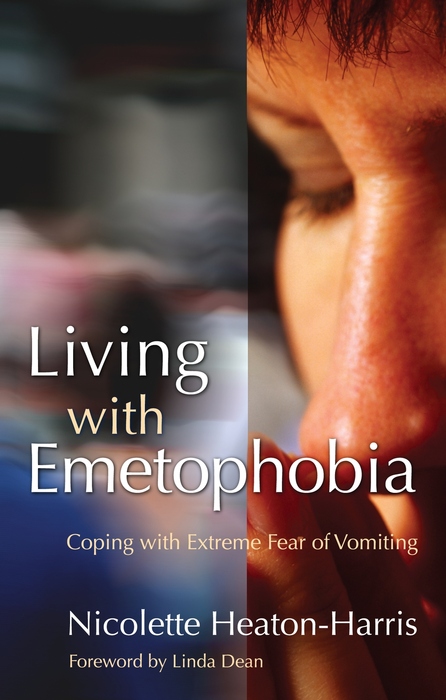 Because of this, they are very scared.
Because of this, they are very scared. - Improper childcare . When he is not cared for the way he should be, the child develops a psychological trauma. He is afraid that no one will come to the rescue - will not change clothes, will not clean up after him.
- Reproach from parents . Instead of calming the baby, they shout at him.
- Ridicule by other people , most often by peers. If a child becomes ill in a public place, one of the same age will begin to ridicule him.
- Traumatic medical procedures . For example, in case of poisoning, forced gastric lavage.
- Mental trauma in adulthood . If one day a person is poisoned, for example, in a cafe, he is afraid that he will feel bad again. Sometimes a phobia develops due to an unsuccessful attempt to poison yourself with medications or after an alcohol overdose.
- Chronic toxicosis .
 If a pregnant woman had a difficult pregnancy with prolonged toxicosis, then the fear of recurrence during a second pregnancy can be fixed in the subconscious.
If a pregnant woman had a difficult pregnancy with prolonged toxicosis, then the fear of recurrence during a second pregnancy can be fixed in the subconscious.
Some people experience fear not from their own vomiting, but from bouts of nausea of others. In this case, the cause of the phobia lies in associations from childhood. For example, watching an eternally drunk dad and his bouts of vomiting.
Predisposition
People of all ages are predisposed to mental illness. But children are more likely to suffer from emetophobia.
It is important that parents detect this problem in their child in time. People who have experienced negative experiences in the past are also susceptible to this phobia.
One of the causes of phobias is a hereditary factor . If the mother or father of a child suffers from this disease, it is highly likely that he will also have a phobia.
Symptoms
When the state of health worsens, the emetophobe panics, which further aggravates the situation. The more a person thinks about his poor health, the worse he becomes.
Emetophobe can be identified by the following manifestations: afraid of poisoning; Some people have anorexia. Among other signs, there are: a sharp increase or decrease in pressure, heart palpitations, tremors, excessive sweating, skin color changes, etc. In children, the fear of nausea is manifested by the refusal to go to kindergarten or school. The child does not perceive the celebration of any celebrations, trips to entertainment centers, meals in the school canteen, he refuses all this. Emetophobe becomes withdrawn, which will negatively affect its development. Also, children and adolescents do not use buses and other modes of transport, fearing that they will get sick. Vomitophobia is also present in adults. Appears in those people who begin to feel fear after experiencing a negative situation, for example, poisoning at work, in the presence of colleagues. After that, vomitophobes close in on themselves, avoid people, do not visit bars, cafes, do not go to corporate parties. In addition to fear, they experience a sense of shame. Going outside is stressful for them. Women also have a fear of pregnancy, because it is accompanied by nausea and vomiting. For diagnosis, the psychologist uses a psychotherapeutic conversation , which helps to collect an anamnesis. Also, specialists conduct testing on the Yale-Brown scale (detection of OCD) or the Spielberger-Khanin test (detection of anxiety). When testing a potential patient, you need to answer a series of questions, for each of which points are awarded. Their sum makes it possible to establish a mental disorder in a person. Famous personalities suffered from emetophobia: C. Brooker (writer and animator of Great Britain), D. Richards (American actress), E. Benson (American actress), K. Pazitski (Canadian-American comedian). For example, the famous singer Adele vomited on the audience at one of her performances. She admitted that she sometimes experiences panic attacks from the fear of performing. If the phobia is at an early stage, you can try to cope with it yourself with the help of willpower, self-regulation or rationalization. You need to meditate daily, relax, use these tips with every attack. Stress develops due to panic, which provokes the accumulation of muscle energy and an increase in adrenaline. Exercise helps restore a healthy balance . Breathing exercises are also necessary for calming down. It is necessary to inhale deeply through the nose and inflate the stomach, linger for a few seconds. Then slowly exhale through your mouth and draw in your stomach. Nausea is also caused by spasm of the abdominal muscles. To remove it, you need to take a deep breath and tighten the press. Hold this position for 5 seconds and exhale, relaxing your stomach. Wash your face with cold water to distract your brain and body. Do not take cold showers - this will increase stress. Emetophobia must be treated! Which method to choose - the patient decides. But he must be aware that it is impossible to run away from fear, you need to start treating him as soon as possible. Otherwise, fear will negatively affect life, and the patient will completely withdraw from people. If you cannot get rid of the phobia on your own, you will need the help of a professional. If these signs are identified, you should immediately contact a psychotherapist. Basically, a psychological approach is used to treat such fears. Psychologists practice the following: If a specialist chooses the right method of treatment for a particular patient, he will achieve recovery, otherwise the therapy will not give a positive effect. As one of the effective methods, psychotherapists use exposure therapy : the patient is immersed in a disturbing situation and offered to drink medicine in order to artificially induce nausea. A specialist watches a person, and he works out his own fear. This method is considered the most effective, but not everyone decides on it. Exposure therapy is not suitable for children. They use play therapy or hypnosis. The main means of prevention are an active lifestyle and positive emotions. Communication with animals, close people, friends will set you up for positive. It is also important to learn to be distracted. The following exercise will help in this: draw a straight line on a blank piece of paper. At the same time, think only about her. After the person realizes that he is distracted, you need to return to the line, make a "notch" and continue to lead on. This will help to track the dynamics: the fewer deviations from the line, the better the patient has learned to control himself. Anorexia often develops against the background of vomitophobia, since patients often refuse to eat, they develop an aversion to food and smells. Because of the phobia, the quality of life in general decreases. The person becomes different from what he was before. In order to avoid difficulties when communicating with people, visiting public places, you need to overcome your fear from the inside. Features in children and adolescents
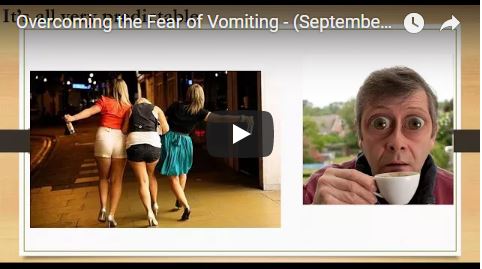
Manifestations in adults
Diagnosis
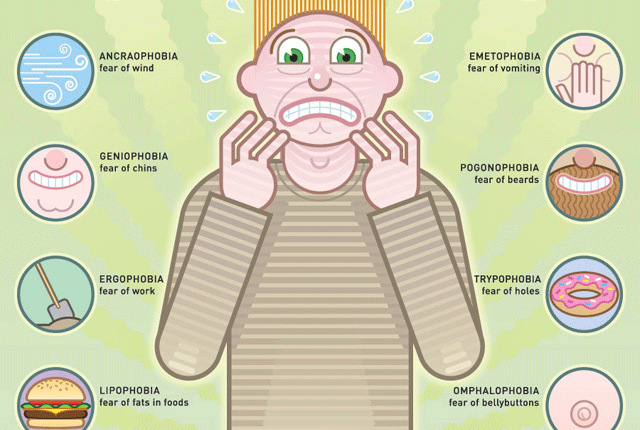
How to stop being afraid on your own?
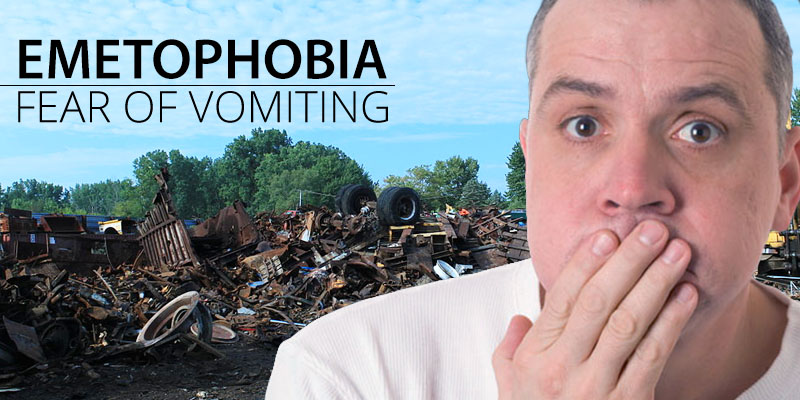 You can walk down the street, run, do push-ups, etc.
You can walk down the street, run, do push-ups, etc. When can't get rid of fear on your own?
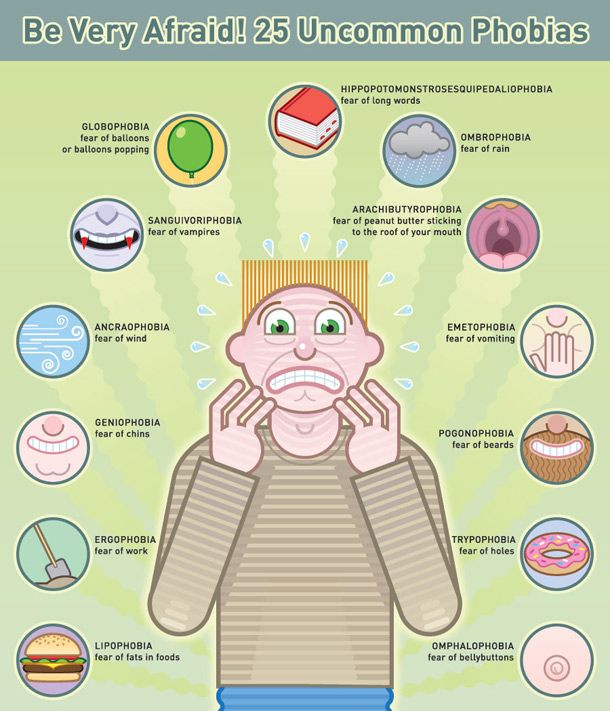 Seek medical attention if:
Seek medical attention if:
There are drug treatments for phobias. But they will only calm the person, and they will not solve the problem of fear. What to do: methods of therapy
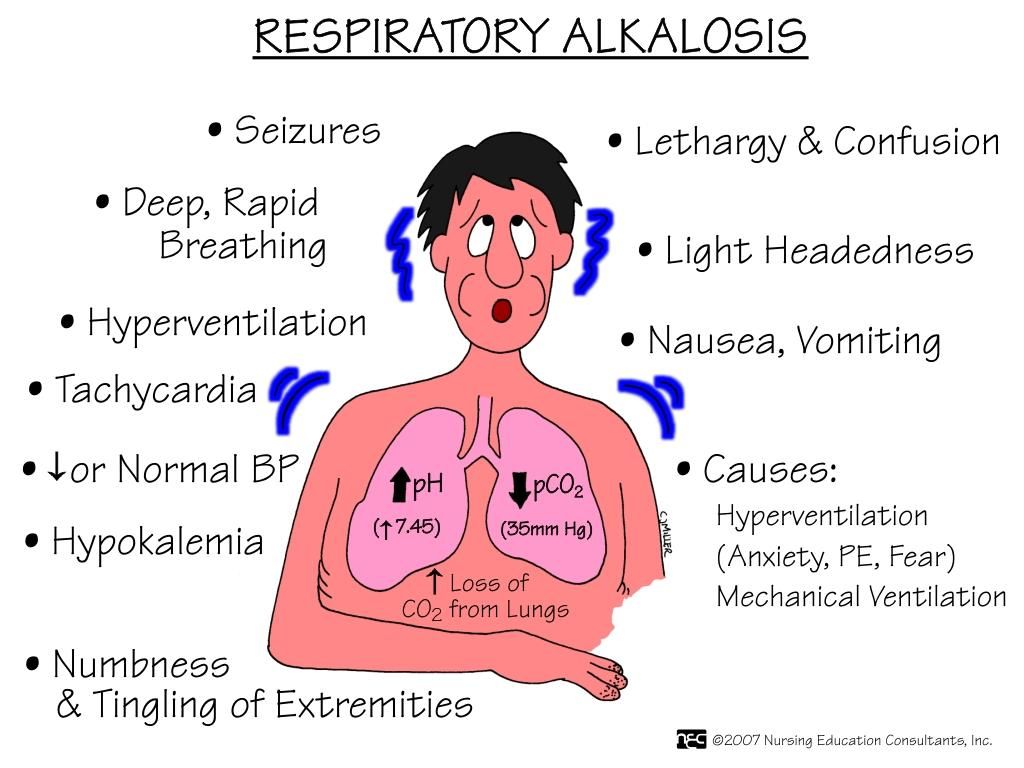
Prevention
 To reduce the likelihood of vomitophobia, you need to be able to suppress stress. No need to react sharply to stress, and if they happen, then allocate time for recovery.
To reduce the likelihood of vomitophobia, you need to be able to suppress stress. No need to react sharply to stress, and if they happen, then allocate time for recovery. Consequences and prognosis

Learn more
